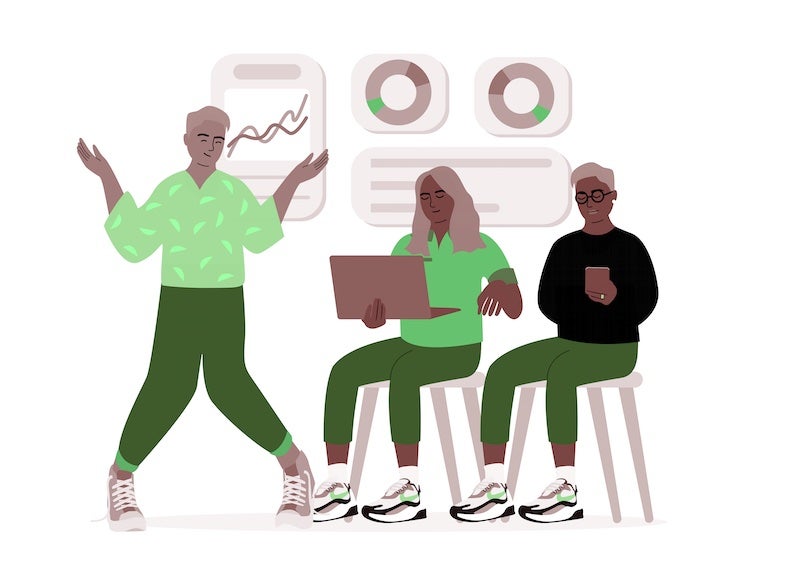With advanced technology like virtual reality (VR), it can sometimes be difficult to fathom all the potential applications it can have in the business world. However, nearly every day there seems to be new and exciting innovations in the VR space that can impact both businesses and their customers.
Below, several members of Young Entrepreneur Council discuss some of the cool, unique ways they’ve seen virtual reality being used recently—from immersive training experiences to global collaboration—and how these use cases might inspire any entrepreneur to leverage virtual reality for their own business.
Members pictured from left to right.
Photos courtesy of the individual members.
1. For Mental Health And Wellness
Virtual reality has been slowly making its way into the mental health and wellness sector. Recently, employers investing in the mental health of their employees have been in the spotlight as well. There are businesses today using VR to help people with anxiety, PTSD, depression and other mental health ailments. Through this type of therapy, people can work through trauma and train their minds by utilizing guided VR meditation. Businesses often offer benefits to aid in their employees’ physical health; however, I’m sure all places of work would be able to utilize these kinds of mental health benefits. – John Hall, Calendar
2. For Immersive, Interactive Training Experiences
Using virtual reality to train first responders is one of the most interesting use cases I’ve seen for virtual reality. It’s hard to mimic a situation where you’re being put in harm’s way. Virtual reality allows you to adjust a simulation in ways that you may not be able to in real life. Plus, it is less dangerous than other methods of training. Organizations issuing the training are then able to capture relevant data about the progress of their candidates and make more informed training decisions. – Michael Fellows, Solidity Beginner
3. For Collaboration On A Global Scale
The pandemic has ushered in a new era of digital events, conferences, training and meetings. With innovative VR platforms and applications such as meetingRoom, it is now possible to bridge time zones and collaborate with global clients or teams just like you were all together in the same room. Presenters can give presentations in a simulated environment, which can be helpful in training or coaching sessions with clients. The capacity to hop on a call with someone in London and collaborate as though I am in the same room opens doors for better training with my coaching and digital marketing clients, not to mention better workflow with our global team. VR could also be used for team-building exercises, market research, sales presentations and product demonstrations. – Tonika Bruce, Lead Nicely, Inc.
4. For An Enhanced E-Commerce Experience
Virtual reality is transforming the way customers explore and compare products. Some e-commerce shops today are utilizing this technology to allow their shoppers to get a better sense of what the product will be like in person by exploring it virtually first. This technology presents a valuable opportunity for brands to create an even more rewarding, one-of-a-kind experience for their customers. In addition to enhancing their experience, it also has the potential to significantly reduce the costs of more traditional methods. For example, the more shoppers can take a look and explore a product before purchasing it, the less likely they will be dissatisfied, need customer service and initiate a return. – Blair Thomas, eMerchantBroker
5. For More Enticing Marketing Efforts
The most popular way to market tourist sites is through videos showcasing the beauty of the areas. Companies that use VR take the experience to the next level by giving potential visitors the chance to visit a place virtually. The excitement of the people treading on white-sand beaches or walking around magnificent structures is incredible. It’s astonishing that not all travel and tour companies are doing this now. Lowe’s too is utilizing VR well with the Holoroom How To experience. More people prefer DIY home improvement projects to save money and personalize designs. The AR/VR experience at Lowe’s gives DIY homeowners the confidence to start a project. There is so much potential in VR in marketing that it’s surprising it isn’t mainstream yet. – Bryce Welker, Big 4 Accounting Firms
6. For Bringing Fantastic Experiences To Life
The Franklin Institute and other Philadelphia museums allow visitors to immerse themselves in historical settings using virtual reality. A child can explore a shipwreck underwater without ever getting wet, or walk around Impressionist art exhibits. They will engage their senses and remember the experience. Entrepreneurs, especially those working with children, could use VR to bring fantastic experiences to life. When you create such an experience, you also build positive associations within the brain and customers will remember your personal branding. For example, if you are selling a B2B service about team building, you can use VR with remote team members so they can engage better than they would on a video call. You have multiple possibilities for engagement. – Duran Inci, Optimum7
7. For Speeding Up The Sales Process
One of the coolest and most unique ways I have seen virtual reality used recently is by a company that makes manufacturing and material processing equipment. A significant challenge this company faced was the extremely long lead times their clients encountered during the sales process. This was due to the complex nature of the quotation process, not to mention the inability to accurately demonstrate the end product to the decision makers. To overcome these challenges and drastically reduce the length of their sales cycles, the company chose to leverage virtual reality software displayed on tablets. With this software, they could demonstrate their products to clients remotely and quickly create configurations for quotes, cutting sales cycle times dramatically. – Richard Fong, Trustable Tech




